It’s time to talk about dismounts, which are arguably one of the most important parts of any bar routine since it’s the last element a judge sees. If done well, the judge will think back on the routine more favorably as a whole. If done poorly, well, the opposite is true.
Think about it this way: Imagine a customer goes into a store and is polite to the staff up until the last moment when he says “by the way, your stuff sucks,” and walks out of the door. Despite the fact that 99 percent of the interaction was positive, the staff’s impression of the customer as a whole is likely tainted because of that one negative moment, which they’re more likely to remember.
Dismounts sort of act in a similar way in that they can really make or break the judges’ overall impression of a routine. Let’s start with some of the basics before taking a look at the technique of one of the more popular NCAA bar dismounts, the double layout.
Tap Swing
First, there’s something called a “tap swing”. Think of it as the engine that provides power for skills on bars, whether it be blind fulls, Tkatchevs or double layout dismounts.
A tap is made up of many sections. If you imagine a clock, where a gymnast’s handstand is midnight, the first part occurs from there until around four of five o’clock, depending on the skill. This is where the gymnast holds a piked to slightly hollow body position before opening up her body to a more arched one, which occurs from roughly four to seven o’clock. This transition from a closed body position to a more open one is crucial in generating power.
The third and final part of the tap happens on the upswing, where the gymnast then kicks her legs upwards, creating a piked or hollowed position once more. So, to condense the three parts, just remember that the first and the third parts require a closed hip position, while the middle part requires an open position. Closed, open, closed.
The exact timing of each tap section is very important and differs depending on how much power and energy the following skill requires. Getting the timing wrong could be the difference between a Jaegar that catches and one that lands on the ground, or a stuck dismount and one that requires a gymnast to take a step backwards.
This brings us to the double layout.

Double Layout
There are two main techniques when it comes to this dismount. The first is performed by Maryland’s Audrey Barber and UCLA’s Kyla Ross, where the timing of the tap is so effective that it allows the body to remain in a slightly arched position in the air throughout the dismount.
The second technique is performed by Alabama’s Jensie Givens and LSU’s Alyona Shchennikova, where the body passes through more of a pike-arch-piked positioning in the air. This is a way to force some of the rotation the dismount requires when it’s not fully generated by the tap.
Although both methods are common, the first technique is perhaps the more preferred one, since the latter runs the risk of receiving some body positioning deductions in the air and upon landing.
Left video flipped for comparison.
Let’s break down the two techniques further while paying special attention to the tap, which is the cause of the effect of having two different styles in the air. Remember there are three parts, comparable to a clock face from midnight to around 10 o’clock, when the tap ends and the gymnast releases from the bar.
First part (midnight to four or five o’clock)
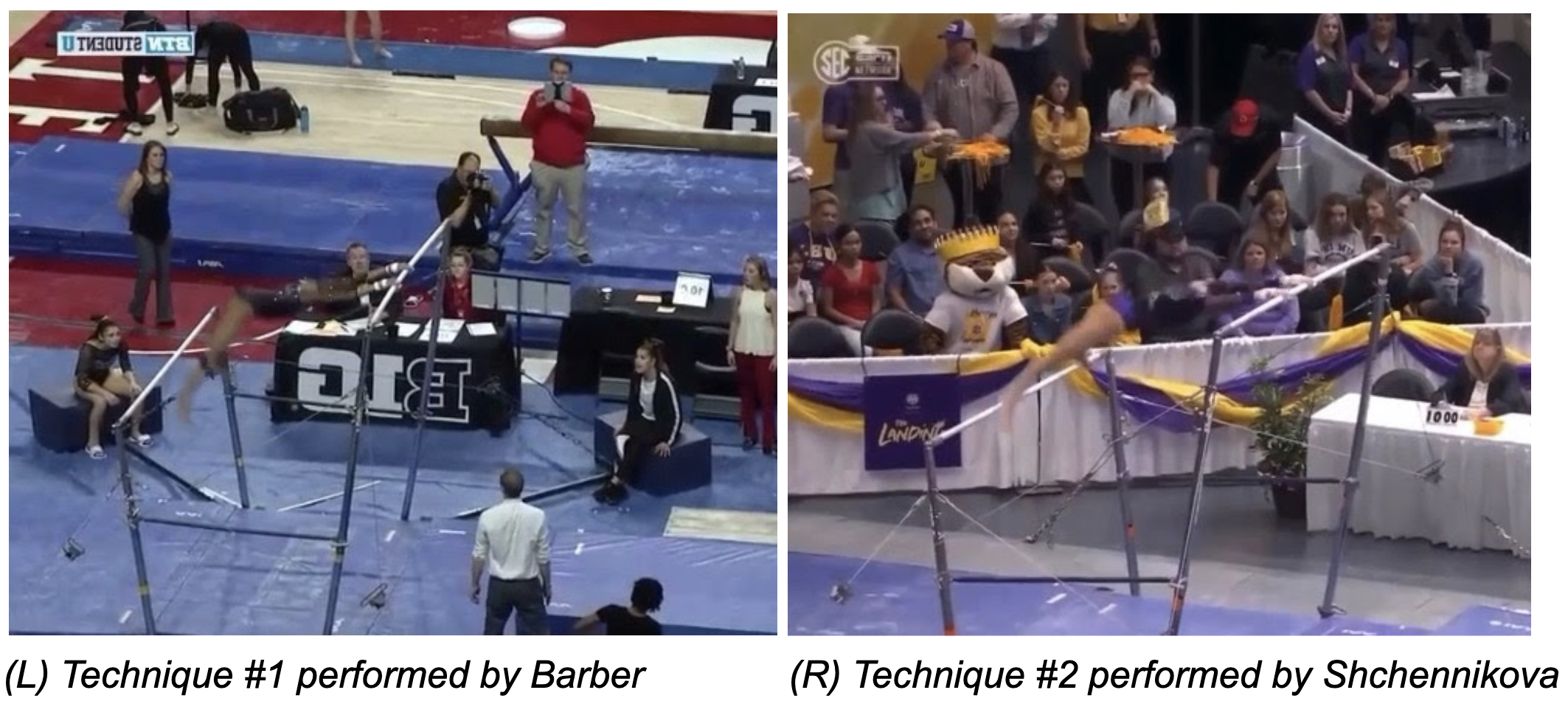
The differences are noticeable starting with the first part of the tap. Barber begins hers by holding a more accentuated pike position, which will help her get a stronger bend in the bar that’ll later work to her advantage. Shchennikova, on the other hand, maintains a more hollow body position and it isn’t emphasized for as long as Barber’s.
By the time the tap strikes four o’clock, Shchennikova has already opened her body for the second part, whereas Barber still remains nice and closed. Barber’s later tap will allow her to snap her feet and hips upward with more emphasis off the bar later on, generating greater rotation.

Second Part (four or five to around seven o’clock)
Underneath the bar, Shchennikova holds a much more dramatic arch that helps her overcompensate for her rushed timing. Shchennikova’s more open position will make it easier for her to whip her toes upwards, although in doing so she’ll lose some natural rotation in her hips, which is really the epicenter for rotation in a double layout.
By contrast, Barber maintains a tightly arched position in the second part of the tap, which will help her drive her hips up and around once she leaves the bar.
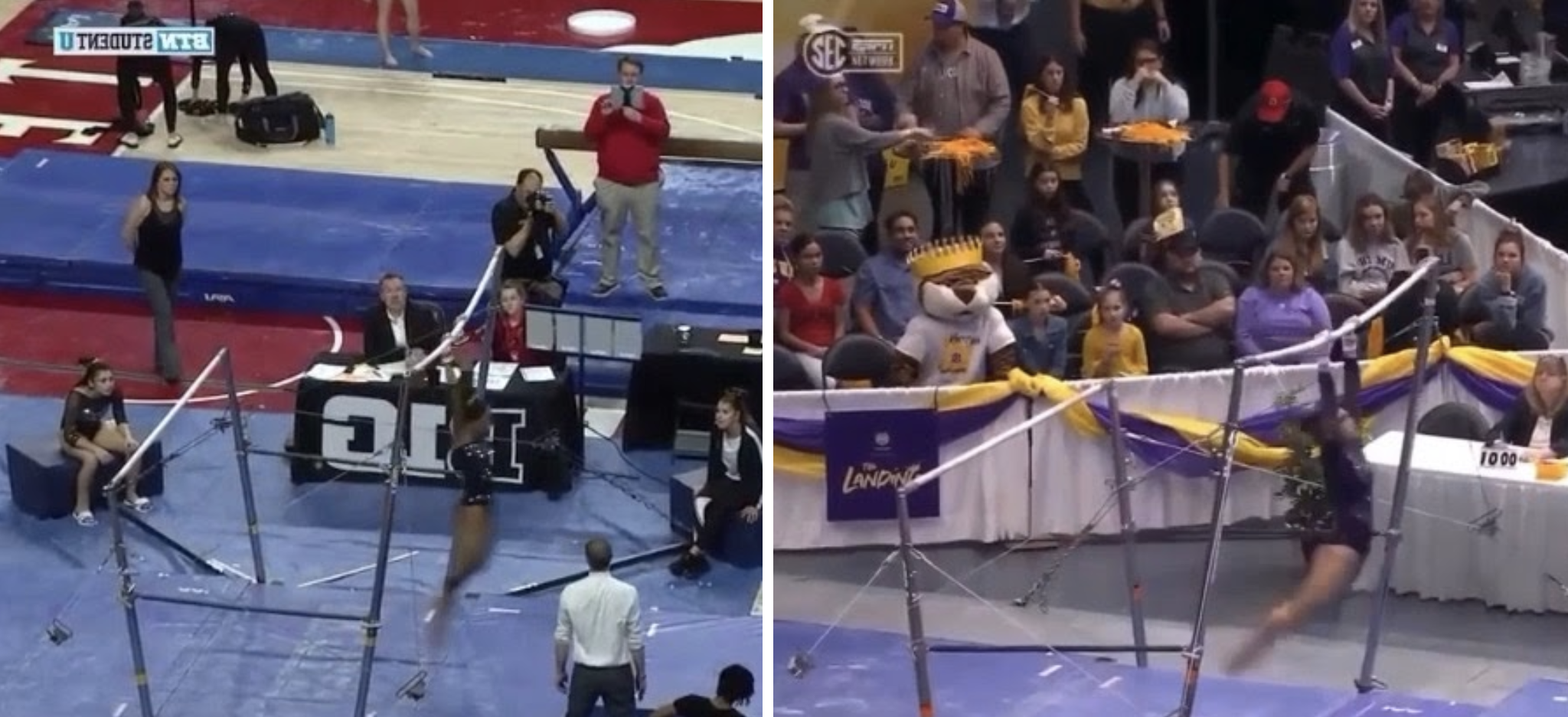
Third Part (seven to 10 o’clock)
On the last part of the tap, Barber remains nice and open with a straight body line until she kicks her toes upwards at some point around nine o’clock. This later tap allows her to gain rotational speed in her hips, which is then accelerated when she snaps her arms down to her sides after releasing the bar.
Shchennikova kicks much earlier, which you can see by her more closed body positioning around eight o’clock. The tap she uses is closer to one you’d see on a full-in, which is why she has a bit of a harder time rotating off the bar.
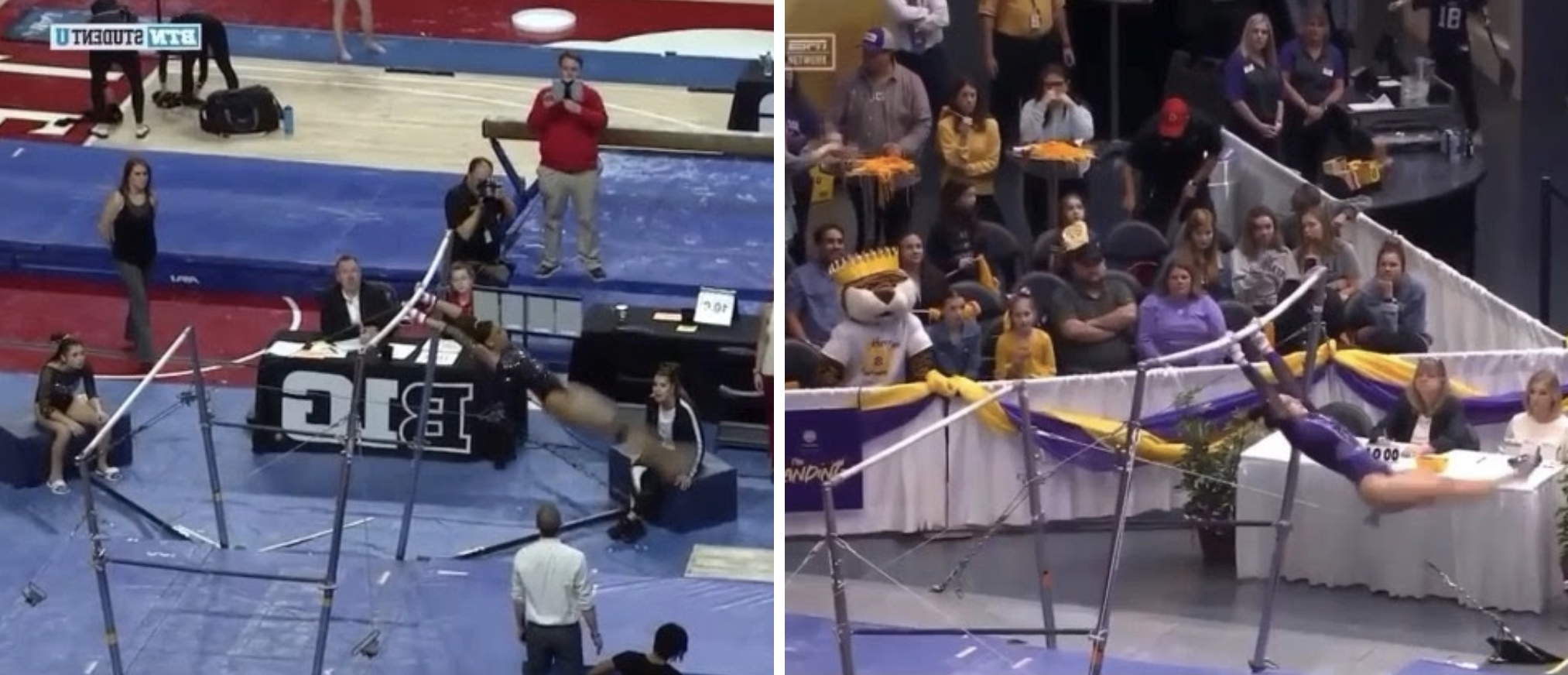
Airtime
At first, when both gymnasts release the bar, their positioning looks the same. They both snap to what we call a “candlestick” position off the bar, which you can do by lying on your back and then kicking your feet upwards until just your upper back is resting on the floor and your toes are pointed near vertical.
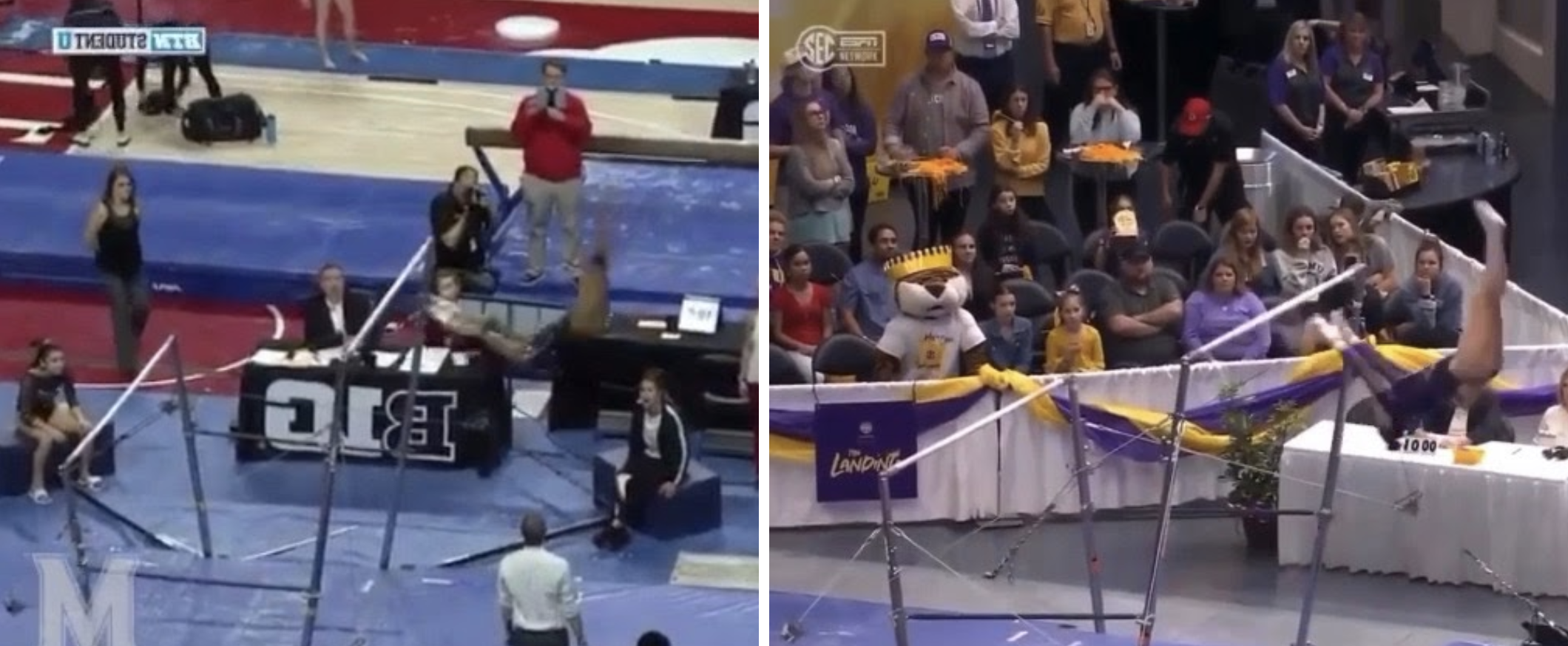
However, after just half a rotation the differences become more noticeable. Barber is coasting in a tight arch position, which she will maintain until she lands, whereas Shchennikova is now forced to make more severe body shapes in the air in order to forge some of the rotation she lost in her tap.
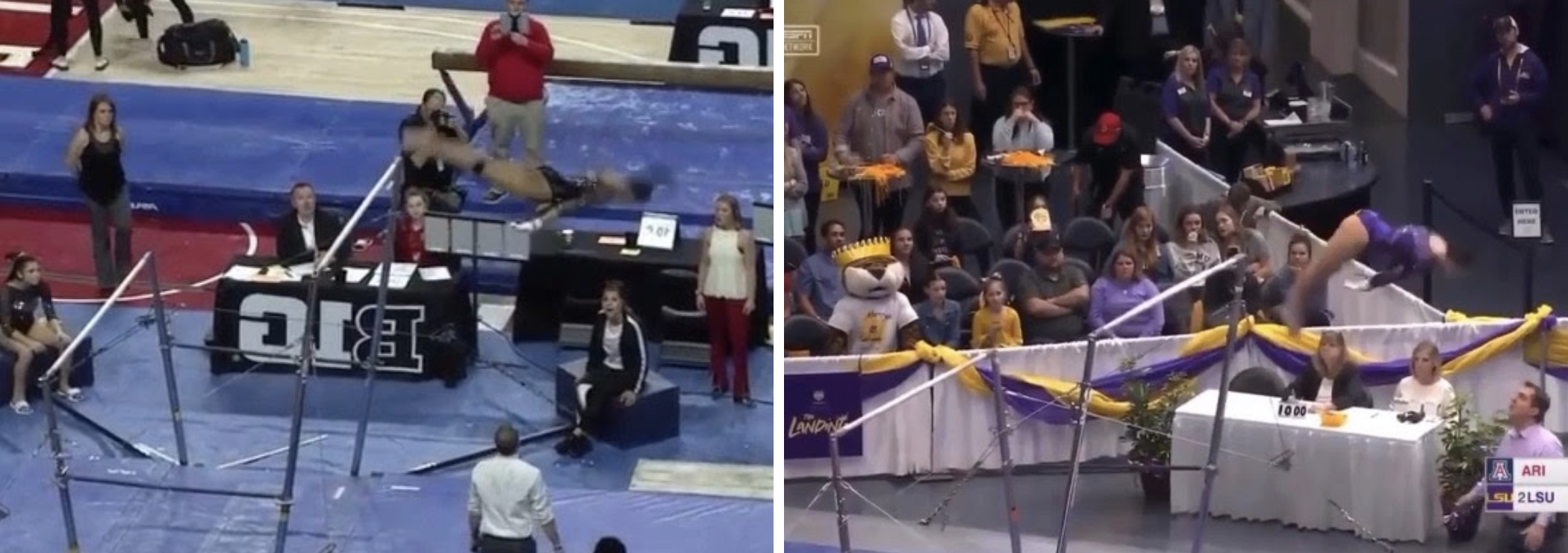
After another half salto, Shchennikova has opened up to an extreme arch. This change from one severe body position (pike) to another (arch) is a technique for creating rotation. On the left, you can see Barber has great rotation, leading through the hips with her toes in the same plane as the rest of her body.
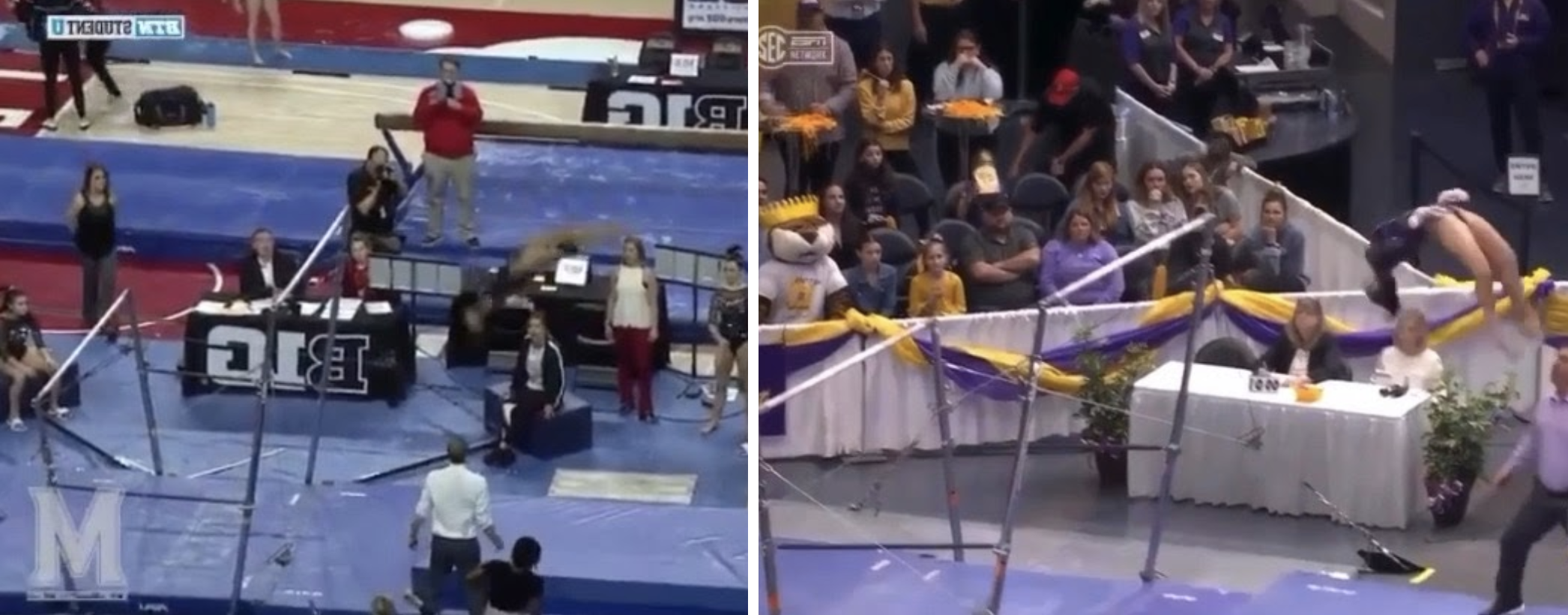
Shchennikova then drives her feet over like a whip, finishing the dismount in another piked position. This whipping action will make it more likely for her to land with her chest down, possibly taking a step backwards, since her energy on the skill is a little more chaotic than Barber’s.
Speaking of her counterpart, at this point Barber has switched from a tight arch to a tight hollow position in anticipation of the landing. This helps her spot the ground and bring her chest up for her eventual stick.
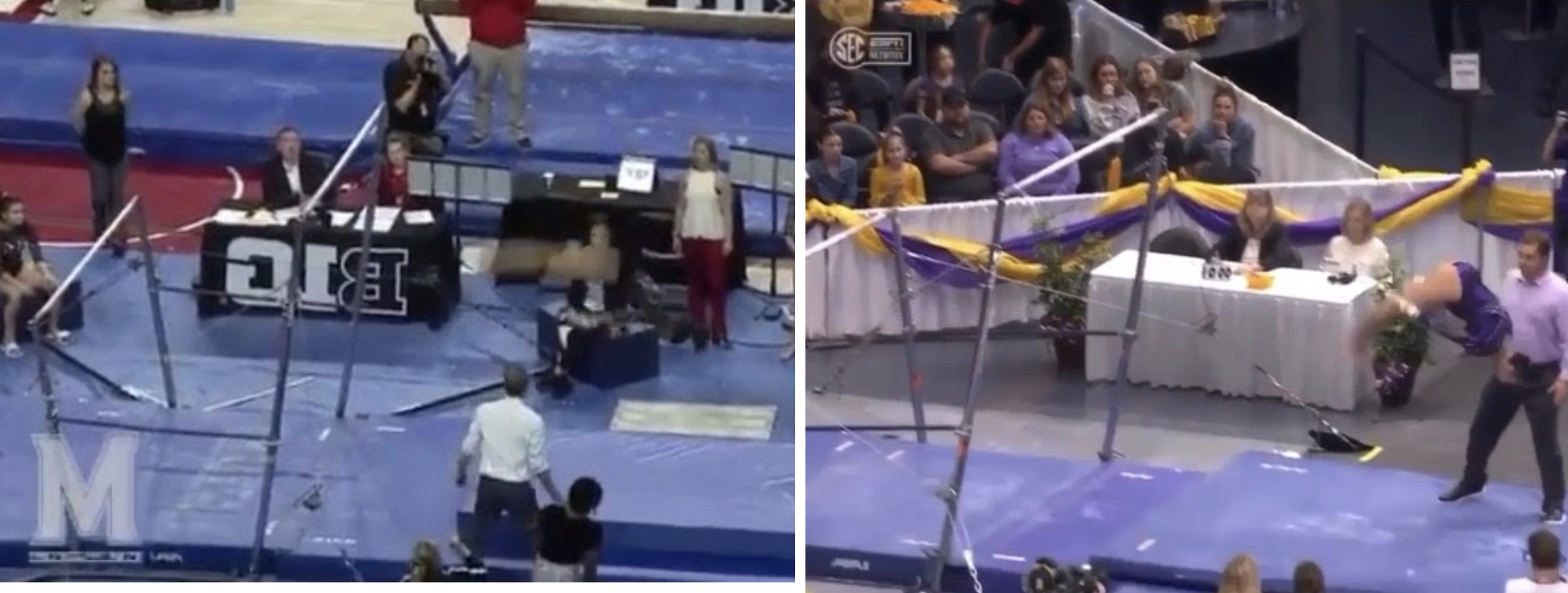
Summary
Technique No. 1
- Employs a later tap (more correct timing)
- More natural rotation from hips off the bar
- Easier to stick
Technique No. 2
- Employs an earlier tap
- Requires a harder kick and more severe shape changes to pull around
- More likely to land with chest down
Article by Katie Norris
Like what you see? Consider donating to support our efforts throughout the year!

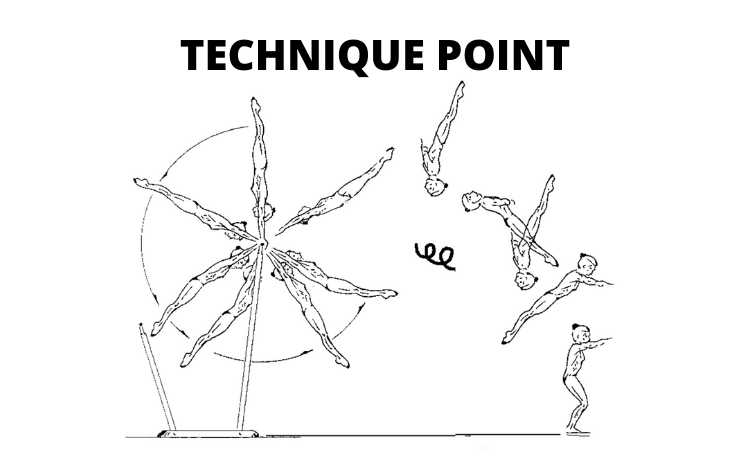



2 comments